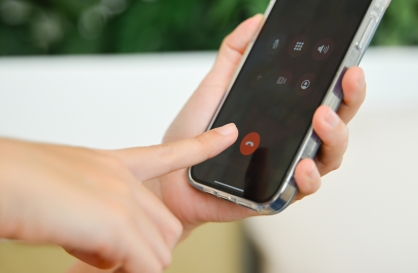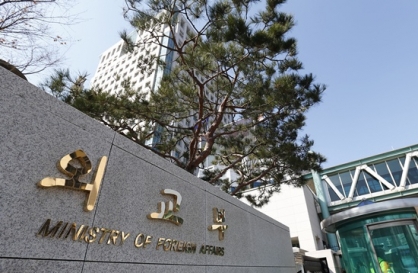The gap between the wealthy and the poor in Korea is widening further in education, a report showed Monday.
According to the report entitled “Social Indicator Trends in Korea” issued by the Bank of Korea, those at the upper level in terms of annual income tend to spend more on their children’s education, which better ensures their success in society.
Low-income earners, in contrast, do not have any extra money to invest in their children’s education, with their education-related budget stuck at the same level.
The widening discrepancy in education spending among Korean families is expected to result in more inequality in terms of access to higher education and jobs, the report suggest.
Education accounted for 7.2 percent among Korean families living in cities in 1982. The figure continued to rise in the following years: 10.2 percent in 1995, 11.2 percent in 2000, 11.8 percent in 2005 and 13.3 percent in 2010.
At the same time, the broader percentage of high school students admitted to universities rose accordingly: 41 percent in 1995, 59 percent in 2006 and 61 percent in 2007.
Aside from the big-picture growth, however, the income-based spending on children’s education began to show a discernible gap from the early 2000s.
Those in the top 20 percent based on their annual income increased their spending on their children’s education from 12.3 percent in 2003 to 15.1 percent in 2010.
Those at the bottom 20 percent spent 7.1 percent of their income on their children’s education in 2003 and the figure little changed in the following years after hitting a peak of 8.2 percent in 2008. The ratio stood at 7.4 percent in 2010.
Both groups reduced their education-related spending in 2009-2010, apparently affected by the economic slowdown following the global financial crisis in 2008.
“Korean household’s education budget increase is led by the high-income earners, sparking a widening gap with the low-income earners that creates more inequality in education opportunities and exacerbates the income gap between the wealthy and the poor,” the report said.
The report showed that the income-based spending difference happened in both regular and after-school education. Low-income families spent a mere 39,257 won on regular education per month in 2010, up 139 percent from 2003. High-income families spent 194,893 won in 2010, up 182 percent from 2003.
The trend was similar in after-school education, mostly for private institutes, or hagwon. The low-income group’s spending on hagwon education was 38,213 won per month in 2010, while the high-income group set aside 309,872 won.
By Yang Sung-jin (insight@heraldcorp.com)
According to the report entitled “Social Indicator Trends in Korea” issued by the Bank of Korea, those at the upper level in terms of annual income tend to spend more on their children’s education, which better ensures their success in society.
Low-income earners, in contrast, do not have any extra money to invest in their children’s education, with their education-related budget stuck at the same level.
The widening discrepancy in education spending among Korean families is expected to result in more inequality in terms of access to higher education and jobs, the report suggest.
Education accounted for 7.2 percent among Korean families living in cities in 1982. The figure continued to rise in the following years: 10.2 percent in 1995, 11.2 percent in 2000, 11.8 percent in 2005 and 13.3 percent in 2010.
At the same time, the broader percentage of high school students admitted to universities rose accordingly: 41 percent in 1995, 59 percent in 2006 and 61 percent in 2007.
Aside from the big-picture growth, however, the income-based spending on children’s education began to show a discernible gap from the early 2000s.
Those in the top 20 percent based on their annual income increased their spending on their children’s education from 12.3 percent in 2003 to 15.1 percent in 2010.
Those at the bottom 20 percent spent 7.1 percent of their income on their children’s education in 2003 and the figure little changed in the following years after hitting a peak of 8.2 percent in 2008. The ratio stood at 7.4 percent in 2010.
Both groups reduced their education-related spending in 2009-2010, apparently affected by the economic slowdown following the global financial crisis in 2008.
“Korean household’s education budget increase is led by the high-income earners, sparking a widening gap with the low-income earners that creates more inequality in education opportunities and exacerbates the income gap between the wealthy and the poor,” the report said.
The report showed that the income-based spending difference happened in both regular and after-school education. Low-income families spent a mere 39,257 won on regular education per month in 2010, up 139 percent from 2003. High-income families spent 194,893 won in 2010, up 182 percent from 2003.
The trend was similar in after-school education, mostly for private institutes, or hagwon. The low-income group’s spending on hagwon education was 38,213 won per month in 2010, while the high-income group set aside 309,872 won.
By Yang Sung-jin (insight@heraldcorp.com)
-
Articles by Korea Herald




![[Weekender] Korean psyche untangled: Musok](http://res.heraldm.com/phpwas/restmb_idxmake.php?idx=644&simg=/content/image/2024/05/02/20240502050841_0.jpg&u=)

![[Eye Interview] 'If you live to 100, you might as well be happy,' says 88-year-old bestselling essayist](http://res.heraldm.com/phpwas/restmb_idxmake.php?idx=644&simg=/content/image/2024/05/03/20240503050674_0.jpg&u=)











![[Herald Interview] Director of 'Goodbye Earth' aimed to ask how we would face apocalypse](http://res.heraldm.com/phpwas/restmb_idxmake.php?idx=652&simg=/content/image/2024/05/03/20240503050732_0.jpg&u=)
